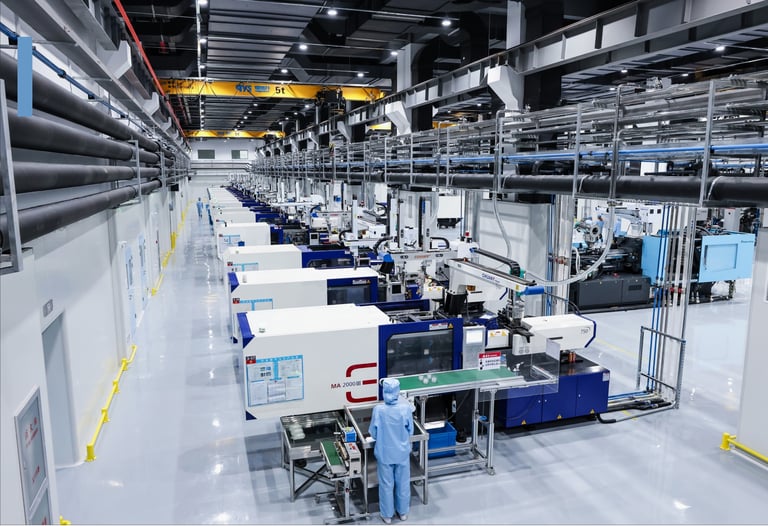Top 5 Benefits of Using a Vacuum Blood Collection System for Accurate Results
12/30/20243 min read


The accuracy of medical test results heavily relies on the quality of blood samples, and one critical factor in ensuring the integrity of these samples is the method of collection. Traditional blood collection techniques have been increasingly supplemented or replaced by vacuum blood collection systems, a more efficient and reliable alternative. Below are the top 5 benefits of using a vacuum blood collection system for accurate results.
1. Enhanced Sample Integrity
One of the primary benefits of using a vacuum blood collection system is the improved integrity of the collected samples. Vacuum tubes are designed to ensure that blood is drawn in a controlled and precise manner, minimizing the risk of hemolysis (destruction of red blood cells) or contamination. This is crucial for obtaining accurate test results, especially for sensitive tests like blood cultures, hormone assays, or genetic testing, where even small variations in sample composition can lead to errors.
Unlike manual collection methods, vacuum blood collection systems create a constant, uniform pressure that helps to draw blood smoothly without the need for excessive force. This reduces the risk of trauma to the blood cells, ensuring that the plasma or serum remains intact, which is critical for the precision of diagnostic tests.
2. Reduction in Human Error
Human error is an inevitable factor in many laboratory processes, and blood collection is no exception. Traditional blood collection methods often rely on the skill and experience of the phlebotomist, which can result in inconsistent sample collection and varying results. Missteps like improper technique, inconsistent sample volumes, or improper handling can compromise the integrity of the blood samples.
Vacuum blood collection systems minimize these risks by automating the blood collection process. The vacuum pressure ensures a standardized method of drawing blood, which eliminates variability caused by human factors. This leads to more consistent results, even when different phlebotomists are involved, and significantly reduces the likelihood of sample-related errors.
3. Minimized Risk of Contamination
Contamination of blood samples can occur in various ways, such as through improper handling, exposure to air, or contact with unsterile surfaces. This contamination can significantly alter the results of laboratory tests, leading to false readings and potentially incorrect diagnoses.
Vacuum blood collection systems are specifically designed to prevent contamination. The tubes used in these systems are typically sealed and come with various additives or preservatives, depending on the test requirements. Moreover, the closed system ensures that blood is drawn directly into the tube without exposure to external elements. As a result, the likelihood of sample contamination is drastically reduced, which directly contributes to the accuracy of the test results.
4. Efficient and Faster Blood Collection Process
Time is often of the essence in medical diagnostics, and the speed of blood collection can have a direct impact on patient care and diagnostic workflows. Manual blood collection methods can be time-consuming and may require multiple attempts to collect the necessary volume of blood, especially in patients with difficult veins. This not only wastes valuable time but also causes discomfort to the patient.
With a vacuum blood collection system, the process is faster and more efficient. The vacuum tube is pre-sterilized and pre-primed, ensuring that blood is drawn quickly and effectively without the need for multiple punctures. In many cases, only one attempt is necessary, improving patient comfort while also increasing laboratory throughput. This efficiency is crucial in busy clinical settings, as it allows lab technicians to process more samples in a shorter amount of time, leading to faster turnaround on test results.
5. Cost-Effective and Versatile
While some medical facilities may initially hesitate to invest in new equipment, vacuum blood collection systems prove to be cost-effective in the long run. These systems help reduce the number of repeat tests required due to poor sample quality, thus saving on both materials and labor. The improved efficiency and reduced error rates also mean that fewer resources are spent on troubleshooting issues related to miscollected or contaminated samples.
Additionally, vacuum blood collection systems are highly versatile. They can be used for a wide range of tests, from routine blood panels to more specialized assays like blood cultures, immunology tests, and serum or plasma analysis. The availability of different tube types with varying additives allows for customized collection, further enhancing the system's adaptability across various testing needs. This versatility makes it an indispensable tool for laboratories, helping them meet diverse diagnostic requirements with one streamlined system.
Final Thoughts
The vacuum blood collection system offers numerous advantages for laboratories and medical professionals aiming to improve the accuracy, reliability, and efficiency of blood sample collection. Enhanced sample integrity, reduced human error, minimized contamination, faster collection times, and cost-effectiveness all combine to make this system an invaluable tool in medical diagnostics.
By adopting a vacuum blood collection system, laboratories can ensure higher quality results, enhance patient safety, and streamline their operational processes. This ultimately leads to better clinical outcomes, quicker diagnosis, and more effective treatment plans for patients. With these benefits in mind, it’s clear why vacuum blood collection systems are quickly becoming the preferred method of blood collection in both clinical and laboratory environments.
© 2024. All rights reserved.
